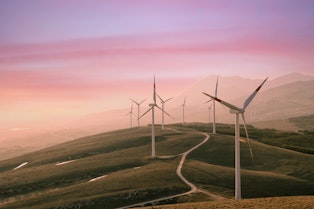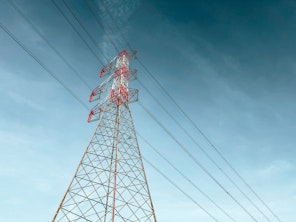Think of energy storage in Europe and the markets that most often come to mind are the UK and Germany. That’s no wonder: both have historically led European energy storage installation rates, albeit in different segments.
The UK, far and away Europe’s largest market by installed capacity, has achieved its leadership position thanks to a focus on utility-scale projects such as Pacific Green’s Richborough and Sheaf energy projects.
Germany, meanwhile, has seen soaraway volumes of residential energy storage installed thanks to a wildly successful government incentive scheme. Germans put up 220,000 residential battery systems in 2022, with a combined capacity of 1.2 GW and 1.9 GWh, up 52% from 2021.
But these are not the only important markets for energy storage in Europe, of course. Here are five others that we consider have true breakout potential—including one that is already shaping up to be among the largest in the region.
Italy
As noted in our recent piece on Europe’s top six energy storage markets, surging interest in battery installations has seen Italy coming out of nowhere to become the second-largest market in Europe in terms of forecast installations up to 2031.
Like the UK, Italy has almost perfect conditions for energy storage growth, with major industrial power demand, a high proportion of renewables on the grid and a geography that complicates transmission.

The country has done a great job of building interconnectors, which is a good thing because in 2021-2022 Italy’s electricity demand outstripped supply by an average 18%.
Most of this electricity was needed for the country’s industrial centres in the north, while local generation is increasingly being developed in the south where solar and wind resources are greatest.
Thus, there is major potential for energy storage to act as a buffer for renewable energy production in the south, storing excesses for delivery north as and when the power is needed by industrial players.
A bonus is that the grid operator Terna is very experienced at energy storage, having been one of the first in Europe to try out utility-scale battery systems. The operator now says it needs 71 GWh of energy storage to hit European Union clean energy targets by 2030.
Belgium
For a small country—it makes up just 0.3% of Europe’s land mass—Belgium has seen some big energy storage projects. In 2021 it commissioned a 25 MW, 100 MWh system for grid balancing and support in East Flanders and in 2022 a similar-sized installation entered operation in Wallonia.
These have been dwarfed in 2023 by the announcement of a 300 MW, 1.2 GWh project to support transmission infrastructure between Belgium and the Netherlands.
Separately, oil company TotalEnergies has commissioned a 25 MW, 75 MWh battery plant at one of its refineries, with a view to helping integrate renewable energy as it diversifies into clean power production.
More generally, Belgium has a favourable market for energy storage, with electricity pricing that encourages applications such as peak shaving.
Poland
Poland, which still gets 79% of its electricity from fossil fuels, is not usually viewed as a fertile ground for energy storage—but that picture could be changing.

In 2021, the country removed legal and regulatory barriers facing battery installations, “giving the green light to the development of energy storage in Poland,” according to Barbara Adamska, president of the Polish Energy Storage Association.
Most of the energy storage in the country before then was in the form of pumped hydro, which provided 1.7 GW and 7.6 GWh of capacity for system balancing as of 2020.
Going forward, however, Aurora Energy Research believes “rapid decommissioning of Poland’s coal fleet will lead to high demand for newbuilt dispatchable capacity, accompanied by growing uncertainty about investments into new gas units.
“This transition time brings a large number of new opportunities for battery storage in Poland.”
Power demand in the country is due to rise by 24 TWh by 2030 on the back of continued electrification of industrial activity, heating and transport, while the amount of coal-fired power in Poland is expected to decrease from 27 GW to 5 GW, law firm Dentons says.
Portugal
Like its neighbour Spain, Portugal is blessed with abundant renewable energy resources—and practically nowhere to send any excess generation. All the country’s interconnections with Europe go via Spain, which itself only has limited grid connection capacity over the Pyrenees.
This situation is only likely to be exacerbated under government plans to get 80% of electricity from renewables by 2026, prompting research firm GlobalData to note that the country must invest heavily in energy storage alongside grid improvements.
“In recent years, with the proliferation of renewable power and massive hydropower capacity, Portugal has been producing more power than its actual consumption,” GlobalData said.
Portuguese authorities awarded auction capacity to renewables with energy storage in 2019 and 2021, and from 2022 have sought to strengthen support for standalone systems, according to law practice CMS.
Further highlighting the potential of the market, utilities in Portugal have begun embracing the energy park concept that Pacific Green has adopted with great success in the UK.
Romania
Smart developers are looking beyond Europe’s traditional energy storage markets to emerging opportunities in Eastern Europe—and Romania, the twelfth-largest European nation, holds special promise.
The country’s economy is expanding and Romania is spending on energy transition efforts, with 2022 seeing €457 million for wind and solar, €148 million for green hydrogen, and subsidies for electricity storage and battery and PV panel production.
In March 2023, the European Commission signed off an additional €103 million to support a buildout of energy storage.
“The aim of the scheme is to support investments in battery electricity storage facilities, allowing for a smooth integration of renewable energy coming from wind and solar sources in the Romanian power system,” the Commission said.
Separately, Romania is looking to carve out a place in the lithium-ion battery supply chain, with plans for a €1.4 billion manufacturing centre for electric vehicle batteries taking shape in Galați, in the east of the country.
Publish date: 04 November, 2023